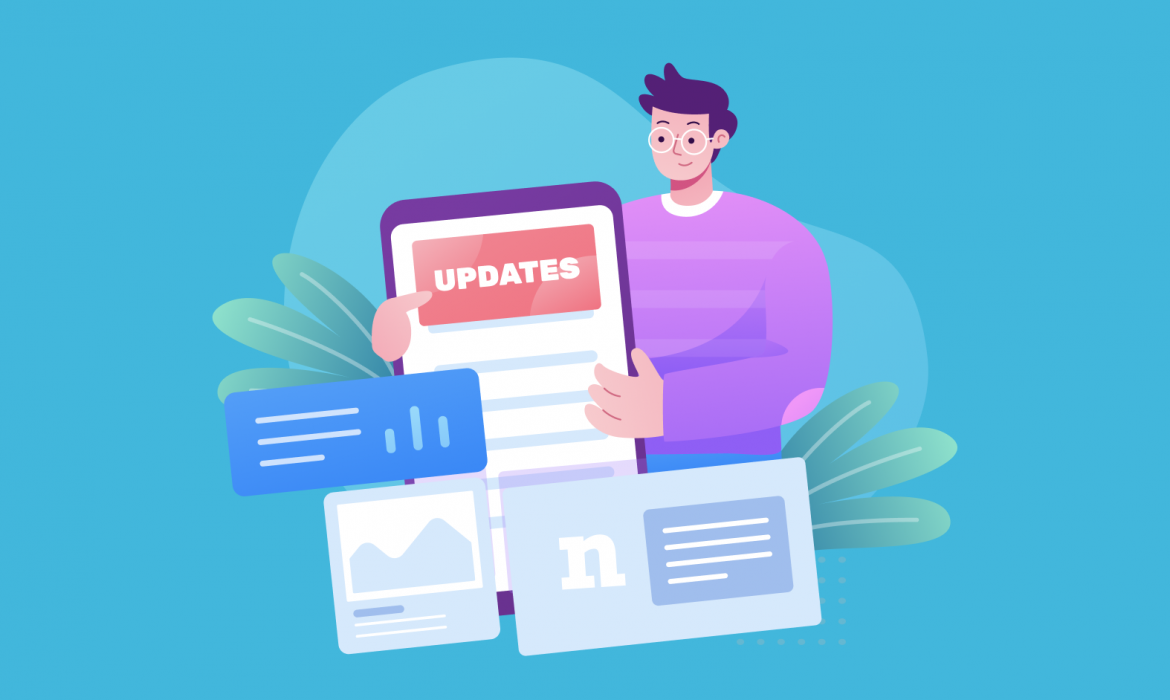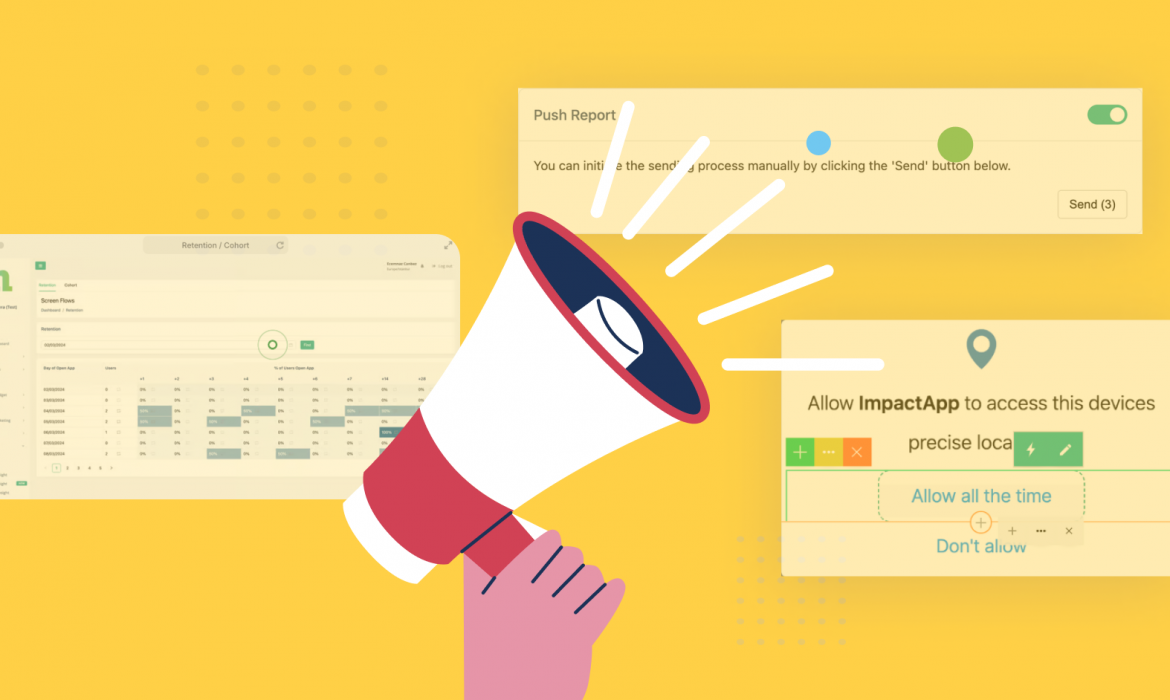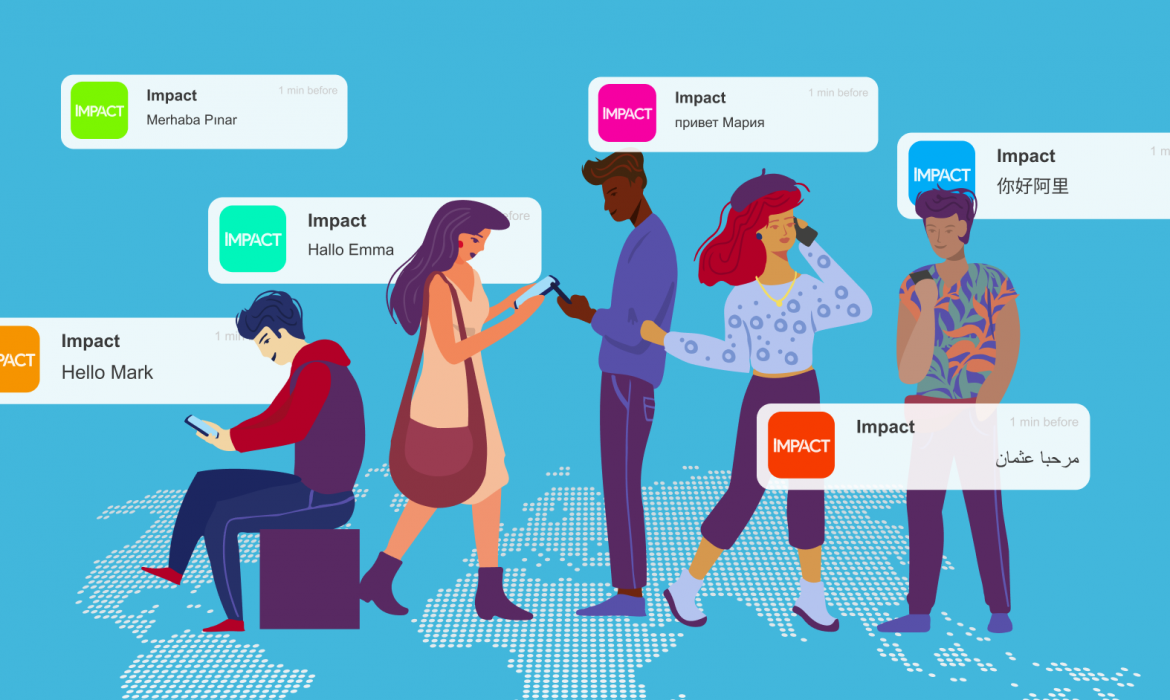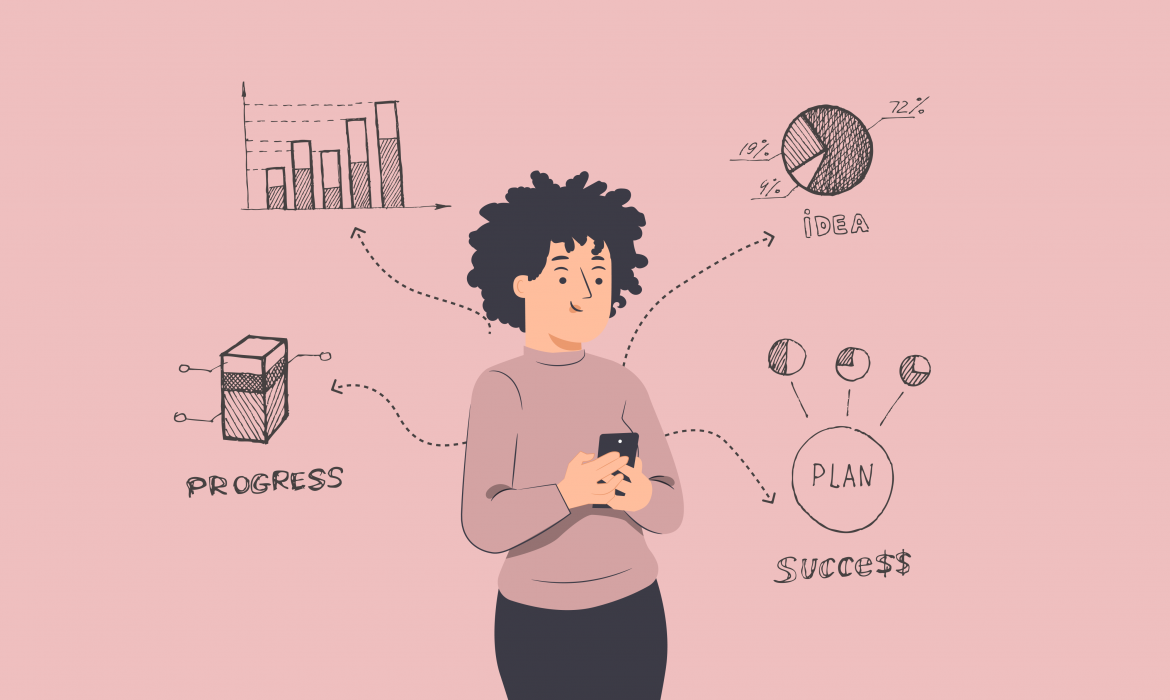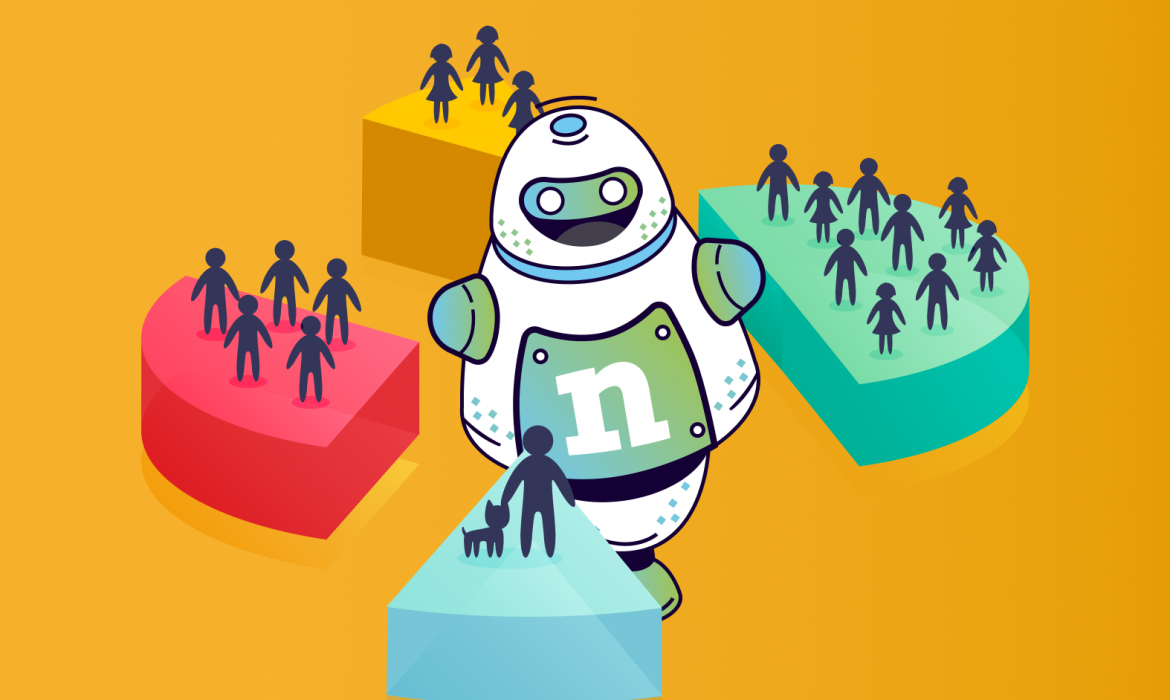Netmera’s Latest Updates in Elevating Customer Engagement
With each passing month, we are driven by the opportunity to enhance our platform further, pushing the boundaries of customer engagement to new heights by introducing advanced features, personalized experiences, and seamless interactions.
10 Tips for Successful Mother’s Day Campaigns
Mother’s Day presents a unique opportunity for businesses to connect with their audience in a heartfelt and meaningful way.
Netmera’s Latest Updates: Elevating Your Experience with Enhanced Features
This month, we’re excited to share many new features and enhancements to improve your user experience and simplify your day-to-day operations.
Loyalty Marketing: Understanding Its Impact on Customer Retention
Loyalty marketing is a marketing strategy businesses use to retain and increase revenue from existing customers by offering them incentives or rewards for their repeat purchases and ongoing loyalty.
Improve Your Global Strategy Through Language-Based Personalization
Improve Your Global Strategy with Language-Based Personalization
In today’s rapidly changing world, where communication and technology opportunities abound, companies increasingly seek ways to connect with their global audience more meaningfully and personally. With access to vast amounts of customer data, including language preferences, demographics, and interests, companies have the tools to create highly tailored experiences that resonate with users on a local and individual level.
This is where language-based personalization comes into play. By customizing messages according to each recipient’s preferred language, brands can effectively engage with their audience in a natural and authentic way.
Netmera offers a seamless solution for language-based personalization, allowing brands to automate message translations, reach international customers, and efficiently respond to cultural differences. With Netmera, companies can enhance their global strategy, expand their audience, and increase engagement and revenue by consistently delivering targeted, relevant content in the correct language.
With the increase in communication and technology opportunities, the life we live has started to change rapidly. Wide possibilities keep us all aware of each other’s lives. Our mobile phones, which we have made the center of our lives, are our closest devices that enable us to reach technology and the global environment. An environment with such a high level of interaction helps companies to easily communicate with their customers.
Today, companies have access to an incredible amount of data of their customers, including their demographic info, their locations, what languages they speak, their hobbies, and even what they have recently searched. Access to this type of data is making it easier to create a personalized and localized experience, which offers significant benefits for both users and brands.
Localization is the adaptation of a product or service to the language and culture of a particular country. Products or services are localized according to the language of that country in many aspects such as content, language, appearance, presentation, benefit and features. The localization of the product is actually a process that serves the globalization of the product. Therefore, localization is also known as product globalization.
The most important issue that bothers the marketers while localization is not being sure exactly how the customization should be done. Most of them choose Generally, it is preferred to use a common language because it forces marketers to create different audiences and create several of the same post. However, this is not an effective technique when it comes to personalized communication.
When a brand customizes a message based on the preferred language of the individuals receiving it, that’s language-based personalization. With this sort of customization, it’s easy for marketing, growth, and engagement teams to provide clearer messaging experiences to a global audience, at scale.
Netmera offers the opportunity to create a single message with different language selections instead of creating the same content in different languages over and over so that you can reach more people than ever with your app and website and engage with users in different languages every day.
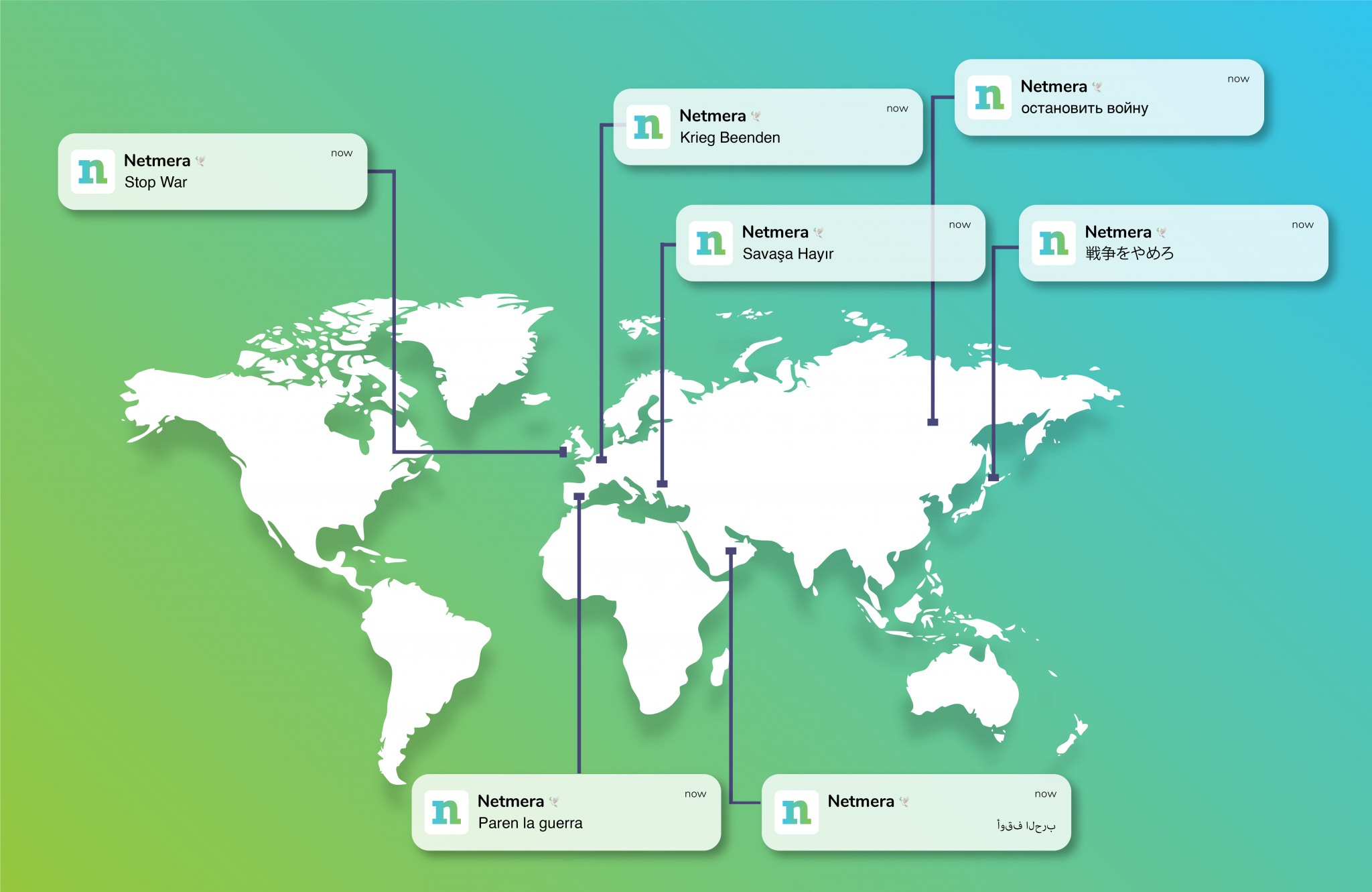
Customize Your Messages with Language-Based Personalization
No matter how clever your campaign may be, it will fail if it’s not in the language your customers speak. If it’s in Spanish and the recipients only speak Turkish, it is highly possible that they will simply ignore or or swipe up if they cannot understand the messages you send. This is where language-based personalization comes into play.
Netmera offers customized communication options to many brands and marketers to help them convey their message in the right language. Without dealing with any integration process, you can send your messages in the desired language according to your preferences.
To make it realize that, Netmera first collects the needed data from customers, including what language they speak, or what language they prefer the app to run with. Thus, after you create your message, you can customize it with different languages, and send it at once automatically; and your message will reach your customers in the desired language.
Netmera also collects the data from customers’ “preferred application language” and delivers messages relying on this preference.
In short, Netmera allows you to take full advantage of language-based personalization to help you automate your message translations, reach your international customers, respond to cultural differences and make your campaigns even more meaningful on your marketing strategy to expand your audience, and increase engagement and revenue.
How To Send Multi-Language Push With Netmera
With Multi-Language Push, you have the power to send the same message in multiple languages in only one campaign. Let’s learn how to send a multi-language push with Netmera. It’s that simple!
4 Strategies for Enhanced Customer Experience in Banking
Financial institutions universally recognize the importance of enhancing customer experiences (CX) as a strategic movement for future prosperity. Yet, despite this acknowledgment, many organizations struggle to translate this recognition into clear outcomes.
Top 10 Fintech Trends Shaping the Future of Finance
In this blog post, we’ll explore the top 10 fintech trends poised to define the future of finance.
Predictive Segmentation: Everything You Need To Know
In the world of customer-focused strategies, businesses are adopting a smart approach called “Predictive Segmentation” to better connect with their customers. Unlike traditional methods like behavioral or demographic segmentation, Predictive Segmentation uses advanced analytics and AI to predict what customers might do in the future. This blog post will explain how businesses use predictive analytics to understand customer behavior, predict upcoming trends, and create personalized strategies. It’s a way for businesses to meet current needs and stay in tune with what customers will likely want down the road.
Let’s dive into the practical side of Predictive Segmentation and see how it helps businesses stay ahead in a constantly changing market.
Predictive Segmentation
What is Predictive Segmentation?
Predictive segmentation is a marketing strategy that divides a target audience into segments based on predictive analytics and machine learning algorithms. Instead of relying solely on traditional demographic or behavioral segmentation, predictive segmentation leverages advanced analytics to identify patterns and trends within large datasets. This allows marketers to anticipate future behavior and tailor their campaigns more effectively.
Why is Predictive Segmentation Important?
Predictive segmentation is important for businesses seeking ways to maximize the impact of their marketing efforts. By harnessing advanced analytics and machine learning practices, predictive segmentation goes beyond traditional demographic or behavioral segmentation, allowing companies to anticipate future customer behaviors and preferences.
This approach enables marketers to tailor their campaigns precisely, delivering personalized messages to specific audience segments. The result is improved targeting, increased campaign effectiveness, and optimized resource allocation. Predictive segmentation enhances the overall customer experience by providing more relevant interactions and gives businesses a competitive edge in rapidly evolving markets. Its real-time adaptability and ability to reduce marketing waste contribute to a more efficient and responsive marketing strategy, fostering customer loyalty and driving long-term success.
Benefits of Predictive Segmentation

Predictive segmentation is a powerful tool to optimize businesses’ marketing efforts, drive customer engagement, and gain a competitive edge in today’s dynamic business environment. The ability to precisely anticipate and respond to customer behavior contributes to more effective and efficient marketing strategies, ultimately leading to improved business outcomes. Let’s review some benefits of utilizing predictive segmentation for businesses aiming to enhance marketing effectiveness and overall business performance.
1. Increased Personalization
Predictive segmentation enables businesses to understand individual customer behaviors and preferences, facilitating the delivery of highly personalized marketing messages and offerings. This enhances the overall customer experience and increases the likelihood of positive responses.
2. Enhanced Targeting
Predictive segmentation allows businesses to focus their marketing efforts on the most promising audience segments by identifying high-value customer segments or those with a higher likelihood of conversion. This leads to more effective targeting and resource allocation.
3. Improved Campaign Effectiveness
Predictive segmentation helps businesses stay ahead of market trends and changes in customer behavior. This adaptability allows for optimizing marketing campaigns in real time, resulting in increased effectiveness and better outcomes.
4. Optimized Resource Allocation
Businesses can allocate their marketing resources more efficiently by concentrating on segments predicted to yield higher returns. This optimization leads to cost savings and a more favorable return on investment (ROI).
5. Real-Time Adaptability
Predictive segmentation models are dynamic and responsive to changes in customer behavior, allowing businesses to adapt their strategies in real-time. This flexibility is valuable in industries with rapidly evolving consumer preferences.
6. Competitive Advantage
Companies that effectively leverage predictive segmentation gain a competitive advantage by staying attuned to customer needs and market trends. This agility enables them to respond quickly to changing conditions and deliver compelling offerings to their target audience.
7. Customer Retention and Loyalty
Predictive segmentation helps businesses identify opportunities for proactive engagement, such as predicting potential churn or identifying cross-selling opportunities. This fosters customer loyalty and strengthens long-term relationships.
8. Data-Driven Decision Making
Predictive segmentation relies on data-driven insights and analytics, empowering businesses to make informed decisions based on a deeper understanding of their target audience. This data-driven approach enhances strategic decision-making across various marketing initiatives.
How Predictive Segmentation Works

The process typically includes data collection, analysis, and the creation of segments based on predictions. Here’s a general overview of how predictive segmentation works:
1. Data Collection
Gather a diverse set of data, including customer interactions, purchase history, demographic information, online behavior, and any other relevant data sources.
2. Data Analysis
Analyze the data using advanced analytics and machine learning algorithms to identify patterns and trends. This allows for more accurate predictions of future customer behavior.
3. Segment Creation
Create segments based on customers’ predicted behavior and preferences. These segments may be based on factors such as the likelihood to convert or customer lifetime value.
4. Campaign Tailoring
Tailor marketing campaigns to each segment based on their predicted behavior and preferences. This allows for more personalized and compelling messaging.
5. Monitor and Adapt
Continuously monitor the effectiveness of campaigns and adapt strategies in real-time based on changes in customer behavior or market trends. This allows for a more responsive and adaptable marketing strategy.
Types of Predictive Segmentation With Examples
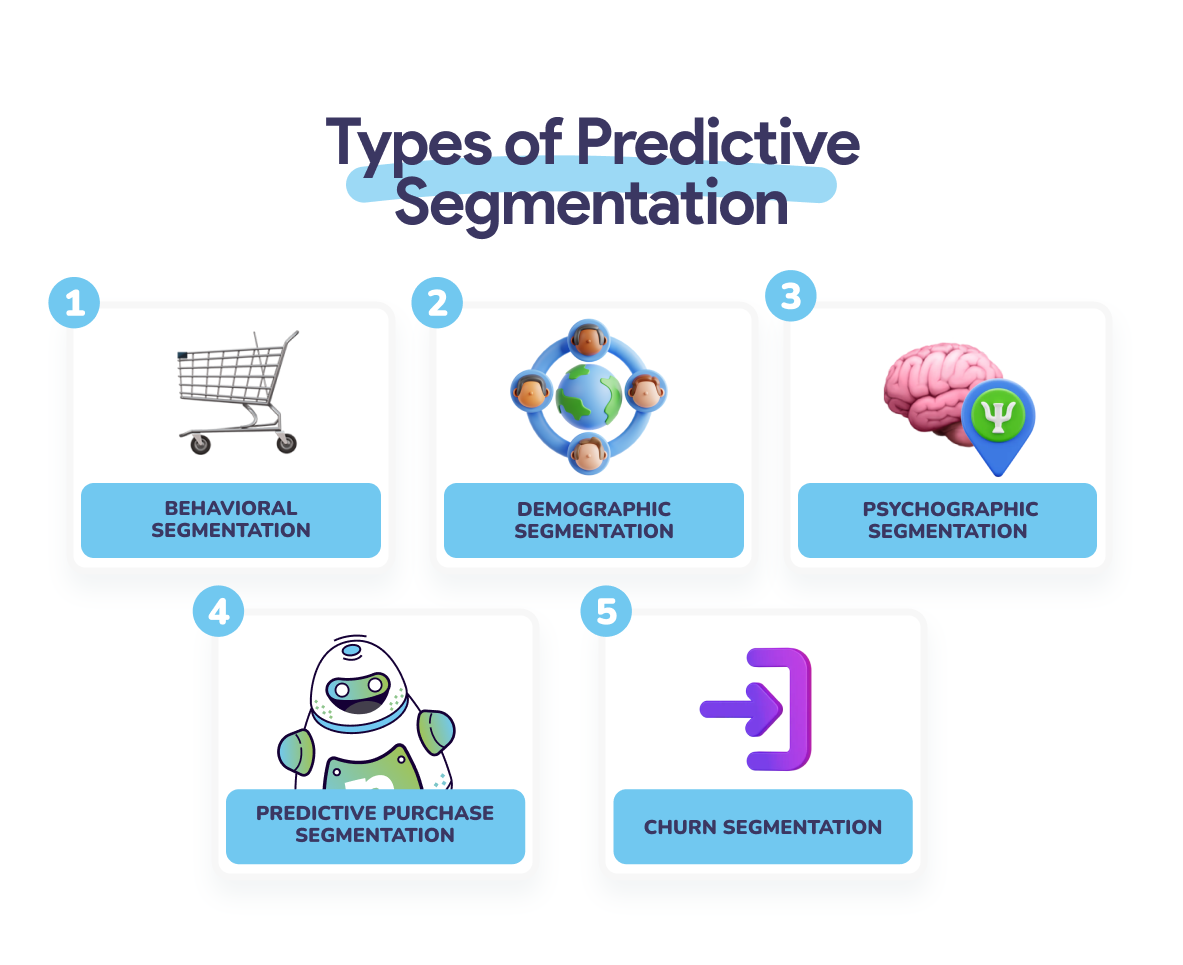
A business can use various types of predictive segmentation to tailor their marketing efforts to specific groups of customers. Each type of segmentation has its unique benefits and can be used to target specific groups of customers with relevant marketing messages and offers. Some of the most common types include:
1. Behavioral Segmentation
This type of segmentation divides customers based on their past behavior, such as purchase history, website interactions, and engagement with marketing campaigns. For example, an online streaming service can predict user preferences based on viewing habits, content ratings, and time spent on different genres. Based on this information, the platform can segment users into categories based on their viewing habits and preferences. Using this segment, the brand can then proactively recommend content that aligns with each user’s predicted future viewing behavior. You can visit our latest article for more information on behavioral segmentation, whether predicted or not.
2. Demographic Segmentation
This type of segmentation divides customers based on demographic characteristics, such as age, gender, income, and location. A mobile carrier brand can be an example of a predictive demographic segmentation. For instance, the brand can identify segments of young professionals and predict their increasing data usage over time. The brand can then tailor future service plans and offers to meet the anticipated needs of this demographic group.
3. Psychographic Segmentation
This type of segmentation divides customers based on their personality traits, values, and lifestyle preferences. An online retailer brand can predict customers’ future purchasing behaviors based on their psychographic profiles, such as values and lifestyle preferences. For example, the brand can identify segments of environmentally conscious shoppers, cruelty-free & vegan shoppers, and anticipate their interest in sustainable, vegan, cruelty-free products. The brand can then launch targeted marketing campaigns and product lines to align with the predicted future preferences of this segment.
4. Predictive Purchase Segmentation
This type of segmentation divides customers based on their predicted likelihood to make purchases in the future. An e-commerce platform can utilize machine learning algorithms to analyze a customer’s browsing history and behavior, cart abandonment patterns, and response to sales events and promotions. Based on this analysis, the platform can predict the future purchase likelihood of each customer and segment them into categories like “High Potential Buyers,” “Moderate Buyers,” and “Low Potential Buyers.” The brand can tailor promotional efforts and marketing campaigns to maximize sales from each segment.
5. Churn Segmentation
This type of segmentation divides customers based on their predicted likelihood to churn or stop doing business with the company. A subscription-based software service can predict which customers risk churning based on decreased usage, lack of engagement, or activity. The brand can then segment users into “High Churn Risk,” “Moderate Churn Risk,” and “Low Churn Risk” categories. Targeted retention strategies such as personalized communication, special offers, and 1:1 meetings with the Success Managers & Product Teams can be implemented in each segment. On the other hand, a streaming service can predict likely-to-churn subscribers by analyzing their last online activity, time spent watching, rankings, ratings, and feedback.
How Netmera Helps
Well, we all now understand what predictive segmentation is. And it is time to discover how Netmera can help you on your journey for advanced segmentation. We use AI algorithms to dig into real-time user events like purchases, clicks, and notifications. The result? Netmera spots patterns and correlations, adapting and learning from every interaction. It’s the backbone of our AI-based segments, making marketing smarter and more effective.
With Netmera, you don’t guess the future; you know it. You can easily create AI-based segments for your marketing campaigns, whether tackling churn or boosting conversions. Netmera gives you the tools to understand user behavior and stay ahead in marketing. Don’t forget to contact us to discuss what we can achieve together or to get more information.
5 Marketing Trends To Follow in 2024
As we approach 2024, we know for a fact that the marketing industry is rapidly transforming, driven by the latest technologies and changing consumer behaviors. In this blog post, we will dive deeper into some of the key trends and predictions shaping the future of marketing and how businesses can adapt to these changes to stay ahead of the curve.
Remember: the key is not just adapting to change but thriving in it. So, let’s unravel the mysteries of the marketing landscape and uncover strategies to not only navigate the evolving currents but to set sail toward success. Are you ready for the journey ahead? Let’s make 2024 the year of marketing excellence!
5 Marketing Trends To Follow in 2024
In marketing, 2024 promises a confluence of important trends ready to redefine industry dynamics.
Foremost among these is AI-powered personalization, where artificial intelligence algorithms seamlessly tailor user experiences, fostering a paradigm shift towards individualized engagement.
The strategic significance of video marketing emerges as a driving force, transcending conventional storytelling and leaving an impactful mark on the consumer side. Moreover, data privacy and compliance become more of a must rather than a trend, obliging businesses to adopt ethical practices and work on consumer trust.
Simultaneously, the continued growth of social media keeps its enduring role in reshaping the communication landscape, providing businesses with a stage of engagement and visibility. And lastly, cultivating data analytics skills emerges, a trend that must be taken seriously to equip marketers with the knowledge to navigate the complexities of a data-centric future.
Collectively, these trends signify an industry commitment to innovation and strategic foresight, positioning marketing endeavors on a dynamic and impactful future. Let’s dive into these five important marketing trends to watch out for in 2024!
1. The Rise of AI-Powered Personalization

Artificial intelligence (AI) has already revolutionized the marketing field, with businesses leveraging the power of machine learning algorithms and natural language processing to create more personalized and engaging experiences for their audience. In the coming years, we can expect AI-powered marketing to become even more sophisticated, allowing businesses to optimize their campaigns in real time and drive more conversions.
One of the key benefits of AI is its ability to analyze vast amounts of data and make data-driven decisions, enabling businesses to deliver more targeted and relevant messaging to their audience. This will allow businesses to create personalized experiences that resonate with their customers and drive more revenue.
“The advancement of AI empowers companies to enhance personalization and segmentation outcomes. By focusing on individual segmentation, businesses can customize personalization strategies based on each customer’s unique desires, needs, and past purchases. We foresee this trend gaining momentum within companies in 2024.”
– Ezgi Gul Eris, Customer Success Team Lead, Netmera
2. The Importance of Video Marketing

Video marketing has grown in popularity for several years, and this trend shows no signs of slowing down in 2024.
With the average person spending 17 hours per week on video consumption, businesses that fail to embrace video marketing risk falling behind.
To succeed in video marketing, businesses must invest in high-quality equipment, software, and personnel to create compelling and engaging video content. Or —do they? For starters or start-up companies who don’t have the time and the budget to spend on video marketing, a decent phone with a decent camera and an account on TikTok would probably work the same. They must also experiment with different formats and styles, from short-form social media videos to long-form brand storytelling content.
Another trend within video marketing to watch out for is employer branding videos. Employer branding videos are becoming increasingly popular and are expected to be one of the significant trends in 2024. These videos allow companies to showcase their culture, values, and work environment engagingly and authentically.
By highlighting their unique strengths as an employer, companies can attract top talent and stand out in a crowded job market. Employer branding videos can take many forms, from behind-the-scenes glimpses into the workplace to interviews with employees and executives. The key is to create informative and entertaining content, giving candidates a sense of what it’s like to work for the company and why it’s a great place to build a career.
3. Data Privacy & Compliance

Data compliance is expected to be one of the major trends in the marketing industry in 2024.
As more businesses collect and analyze vast amounts of customer data, compliance with data protection and privacy regulations is becoming increasingly important. In the wake of high-profile data breaches and scandals, consumers are more concerned than ever about how their personal information is being used and protected.
To build trust and maintain a positive reputation, businesses must prioritize data compliance and follow all relevant regulations and guidelines. This includes implementing robust data protection measures, obtaining customer consent for data collection and usage, and providing transparency and clarity around how data is used. Businesses can build strong customer relationships by prioritizing data compliance and avoiding costly legal penalties.
4. The Continued Growth of Social Media

Social media has become an integral part of modern life, with billions worldwide using platforms like Facebook, Instagram, TikTok, and X to connect with friends, family, and brands. In 2024, we expect social media to continue to evolve and mature, with businesses using it to build brand awareness, engage with their audience, and drive conversions.
In recent years, TikTok has become one of the fastest-growing social media platforms in the world. As we move toward 2024, brands should take note of this trend and consider incorporating TikTok into their marketing strategies if they haven’t started it.
With its emphasis on short-form video content, TikTok offers a unique opportunity for brands to connect with younger audiences and showcase their creativity. As the platform continues to gain popularity, it’s clear that TikTok will play an increasingly important role in social media marketing.
“To succeed on social media, businesses must stay on top of the latest trends and be willing to experiment with new formats and features. They must also focus on building authentic and meaningful relationships with their audience rather than relying on shallow promotional tactics.”
– Mujde Karakaya, Head of Marketing, Netmera
5. Data Analytics Skills

Data Analytics Skills is the last trend for this article, and it is still worth paying attention to in 2024 for marketers and businesses. As the volume of data generated by businesses and consumers continues to increase, the ability to analyze and make sense of this data will become increasingly critical. Data analytics skills will be in high demand as businesses seek to optimize their operations, improve decision-making, and gain a competitive edge. This is where Generative AI becomes the answer.
Data analysts must be proficient in various tools and technologies, including statistical analysis software, data visualization tools, and machine learning algorithms.
Marketers and businesses can make sense of the data, making it easier to get insights from it quickly. So, what does that mean? Well, for marketers, it’s like having a superhero assistant that makes data less confusing. And for us, the consumers? We will start seeing messages that actually matter to us, right when we need them.
Conclusion
The marketing world is rapidly changing, driven by new technologies and shifting consumer behaviors. To succeed in this dynamic landscape, businesses must stay informed, adapt to new trends and best practices, and be willing to experiment and take risks. By embracing the latest trends in AI-powered marketing, video marketing, social media, data privacy and compliance, and data analytics skills, businesses can create more engaging and meaningful experiences for their audience and ultimately drive more revenue and growth.
Behavioral Segmentation: 6 Examples and Strategies
Ever notice how some people meticulously plan every detail of their summer travel while others thrive on spontaneous adventures? Our behaviors, shaped by backgrounds, habits, and emotions, orchestrate the rhythm of our lives. You can be a planner who organizes every detail of your travel and feel joy. Or, you can be someone who craves the thrill of the unknown.
As marketers, understanding and categorizing these diverse approaches is where behavioral segmentation takes center stage.
It’s not merely acknowledging these distinct habits but crafting marketing campaigns that sync seamlessly with these behavioral rhythms. In this article, we’ll dive into the basics of behavioral segmentation. Join us on this exploration as we tell you how marketers can use these behavioral patterns to fine-tune their campaigns and align with the diverse ways customers approach life and decision-making.
Behavioral Segmentation
What is Behavioral Segmentation?
Behavioral segmentation is a marketing strategy that categorizes customers based on their behaviors, attitudes, and usage patterns. In this approach, customers are grouped based on how they interact with a product or service, their purchasing habits, brand loyalty, and other behavioral factors.
This approach to segmentation acknowledges that consumers with similar behaviors may respond similarly to marketing efforts. Therefore, businesses can tailor their marketing strategies and offerings to specific segments, addressing each group’s unique needs and preferences.
Why Behavioral Segmentation is Important?
Leveraging behavioral segmentation in your marketing strategy is crucial because it empowers businesses to understand and respond to their customers’ diverse behaviors, preferences, and needs. After identifying customers through their specific behaviors, attitudes, and usage patterns, marketers can tailor specific segments by adjusting their marketing strategies, messages, and offerings.
This approach enhances the effectiveness of marketing efforts, increases customer satisfaction, and ultimately contributes to the business’s overall success. By delivering more personalized and relevant experiences, businesses can foster stronger customer relationships and optimize resource allocation for maximum impact.
Benefits of Utilizing Behavioral Segmentation
Behavioral segmentation plays a crucial role in marketing strategy, as it enables businesses to understand and target their customers by considering their distinctive behaviors, actions, and patterns. Here are the benefits of using behavioral segmentation as a marketing strategy:
1. Personalization
By learning what your customers like and don’t like, you can create more personalized and engaging experiences to enhance customer satisfaction and loyalty. Moreover, it helps you understand which channels your customers prefer and what type of message they respond to the most.
2. Improved Product Development
Understanding how customers behave can help businesses gain insights into how customers use their products and services. Therefore, businesses can improve product innovation, development, customization, and enhancement to ensure their offerings align with customer needs and wants.
3. Resource Allocation
By knowing the segments that spend the most, businesses can allocate resources more efficiently by focusing on high-value customer segments and maximizing the impact of their marketing efforts.
4. Customer Insights
Behavioral segmentation provides valuable insights into customer motivations, which enables businesses to make informed decisions, stay ahead of market trends, and effectively plan for the future.
5. Competitive Advantage
Understanding and responding to customer behaviors gives businesses a competitive advantage by staying relevant and meeting customer expectations.
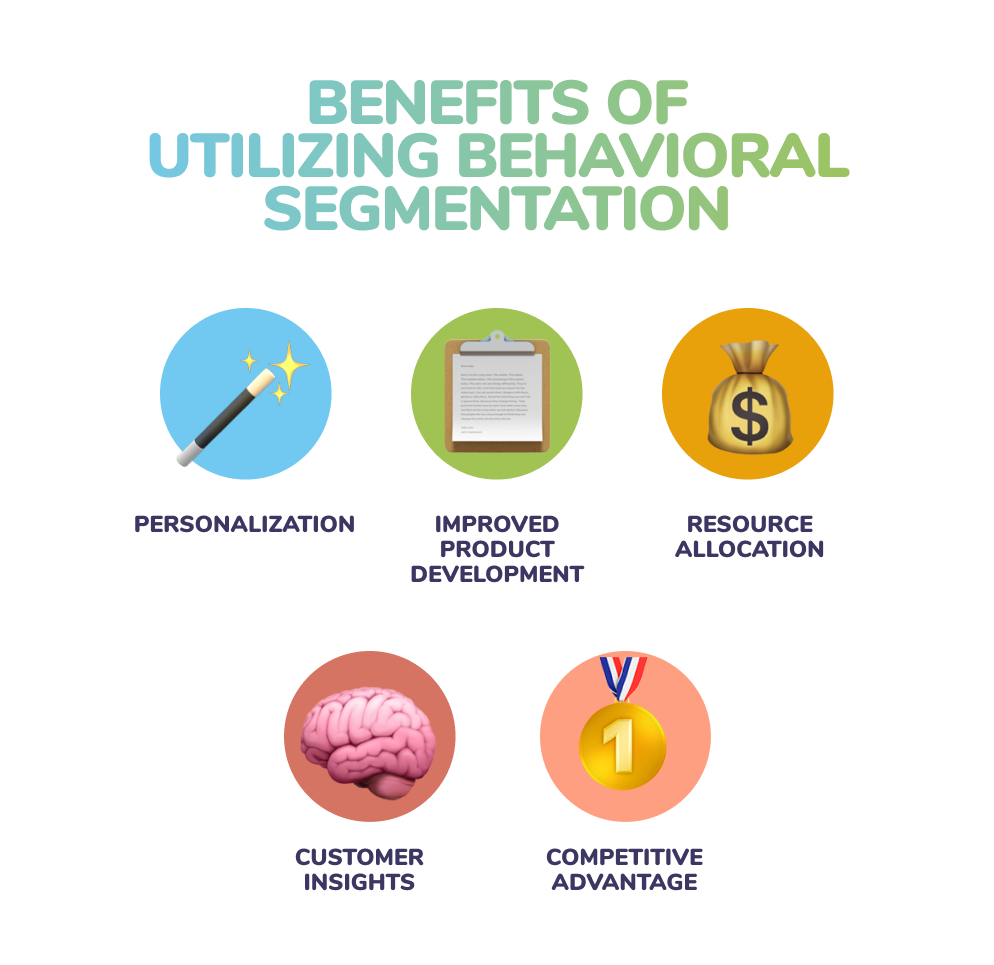
Types of Behavioral Segmentation
Behavioral segmentation can come in various forms. Here are a few types:
1. Occasion-Based Segmentation
It divides customers based on their behaviors during specific occasions or events. When individuals purchase a product for a particular occasion, they may repeat it or never engage in it again. Distinct behaviors and purchasing patterns often manifest in people, whether it’s during holidays, birthdays, or seasonal events.
Understanding how people act based on the occasion can help companies tailor their marketing efforts to resonate with the unique needs and motivations that arise during different events.
2. Usage-Based Segmentation
It involves categorizing customers based on product or service usage patterns. This strategy focuses on understanding how many times the consumer uses a product. It goes beyond identifying who buys a product and delves into the frequency, intensity, and purpose of their usage. Grouping customers based on their product usage is possible by assessing how often and how much they use the product. Usage levels can range from heavy and moderate to minor.
By employing usage-oriented behavioral segmentation, businesses can tailor their marketing strategies to meet each usage segment’s needs and expectations. This type of segmentation allows for more personalized and targeted approaches, ensuring that marketing messages and product enhancements resonate with the diverse usage patterns within the customer base.
3. Loyalty-Based Segmentation
It focuses on categorizing customers according to their level of loyalty to a brand or product. This strategy recognizes that customers exhibit varying loyalty, from occasional buyers to brand enthusiasts. It helps businesses find customers who are loyal to the brand and are more likely to tell others about it.
Businesses can tailor their strategies to nurture and maintain customer loyalty by understanding and grouping customers based on their loyalty behaviors.
Loyalty-based segmentation can identify different segments, such as:
1. Brand Advocates: Customers who consistently choose and actively recommend a particular brand to others.
2. Regular Buyers: Customers who frequently make purchases from a brand but may not actively promote it.
3. Occasional Shoppers: Customers who make sporadic purchases and are less committed to a specific brand.
4. Switchers: Customers who switch between brands based on promotions or external factors.
By recognizing and addressing each loyalty segment’s distinct needs and motivations, businesses can implement targeted retention strategies, loyalty programs, and communication approaches to strengthen and deepen customer relationships.
4. Benefit-Based Segmentation
It takes behavioral segmentation a step further by focusing on the perceived benefits that customers seek from a product or service. There are different benefits that customers look for when purchasing a product, such as availability, price, ease of use, quality, performance, or other varieties that will meet their needs.
For example, for a fitness app, you might have segments based on different benefits users are seeking. Some might use the app primarily for weight loss, while others focus on building muscle or improving flexibility. Understanding these distinct benefits allows you to tailor your messaging and features to meet each segment’s specific needs and motivations.
Benefit-based segmentation allows you to align your product offerings with your customers’ specific goals and desires, creating a more personalized and effective marketing strategy.
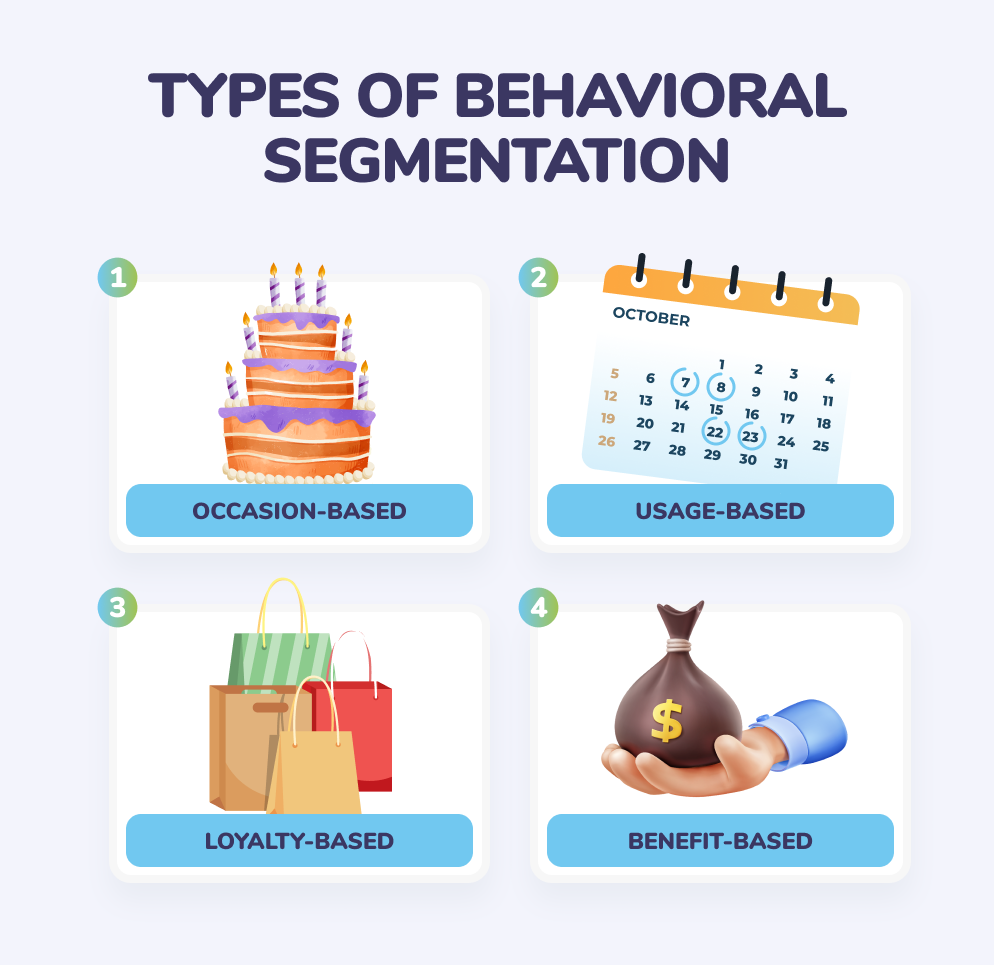
Examples of Behavioral Segmentation
These examples showcase how behavioral segmentation can be applied across various industries to create more targeted and effective marketing strategies.
1. Purchase Behavior
Segmenting customers based on purchasing patterns helps companies tailor marketing campaigns or loyalty programs to enhance customer satisfaction and retention. To illustrate, let’s think about an OTT brand.
To tailor marketing campaigns based on purchase patterns, we can group our customers as “TV Series Enthusiasts,” “Movie Gurus,” “Documentary Lovers,” and “Casual Viewers”.
For TV series enthuistasts, we can focus on promoting trending TV series, creating watchlists, and even releasing entire seasons at once for a binge-worthy experience. Personalized recommendations for similar series can also enhance their user experience.
On the other hand, for movie gurus, we can highlight new movie releases, offer curated playlists, and provide personalized recommendations based on their movie-watching history.
For documentary lovers, we can create curated sections for documentaries, offer educational series, and provide in-depth content recommendations based on their interests. Additionally, they might appreciate behind-the-scenes footage or exclusive interviews with documentary creators.
Lastly, for casual viewers, a user-friendly interface, personalized recommendations across various genres, and occasional promotions or discounts might encourage continued subscriptions.
Why did we implement this strategy? The casual viewers segment includes subscribers who use the OTT platform casually, without a strong preference for specific genres or types of content. We can simultaneously increase engagement and learn more about their preferences by offering personalized recommendations across various genres to this segment.
Group customers according to purchasing patterns to change segments into different industries or brands. For instance, in e-commerce, some customers might be frequent buyers, while others only purchase during sales or promotions.
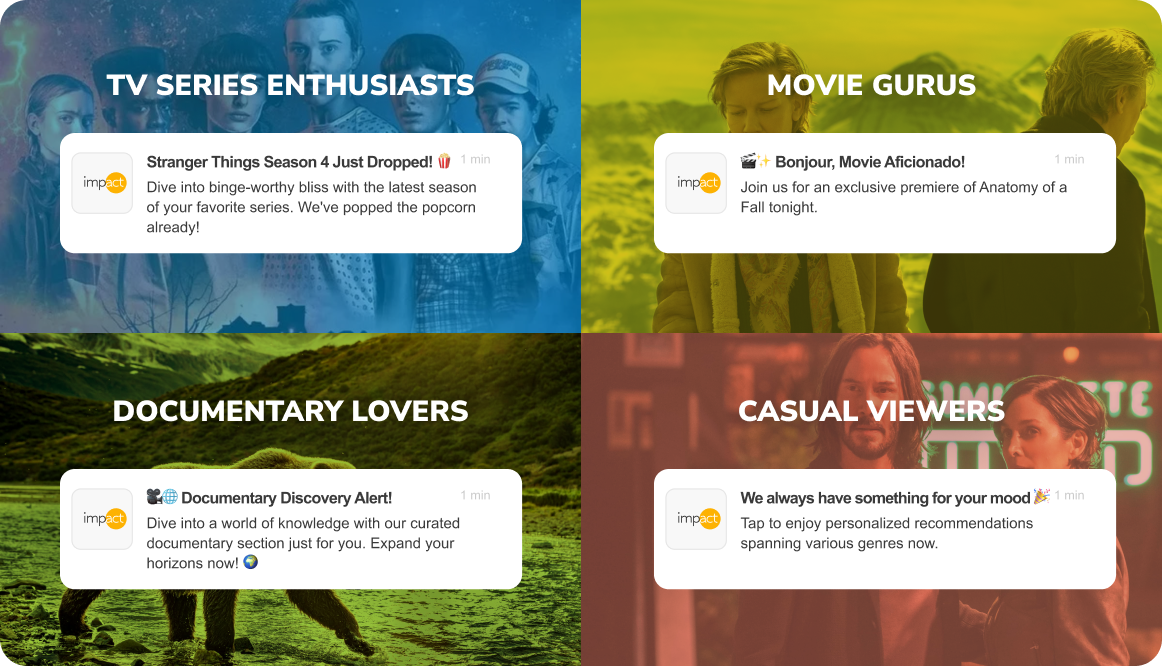
2. Usage Frequency
Categorizing customers based on how often they use a product or service allows companies to target promotions or feature updates to each group’s usage patterns. For example, a music streaming service might have segments like daily users, occasional listeners, working music seekers, or weekend binge-listeners.
For users who engage with the music streaming platform daily, we could offer personalized daily playlists, mood suggestions, and notifications for new releases from their favorite artists.
Secondly, for occasional listeners who use the platform occasionally and do not have a fixed routine for music consumption, we can send personalized recommendations based on their usage patterns, offer occasional promotions, and use targeted advertising to highlight new features or content.
For working music seekers who use the platform while working or studying, we can suggest focus-enhancing and low-tempo playlists, provide a “work mode” feature that filters out distracting content, and offer occasional breaks with personalized music suggestions.
Lastly, for weekend binge-listeners who use the platform intensively on weekends while focusing on high-tempo party music, we can curate special weekend playlists and suggest party or relaxation playlists based on their weekend usage and patterns.
By segmenting users based on their usage frequency and tailoring the platform’s features, recommendations, and promotions to each group’s habits, the music streaming platform can create a more personalized and engaging experience for its diverse user base.
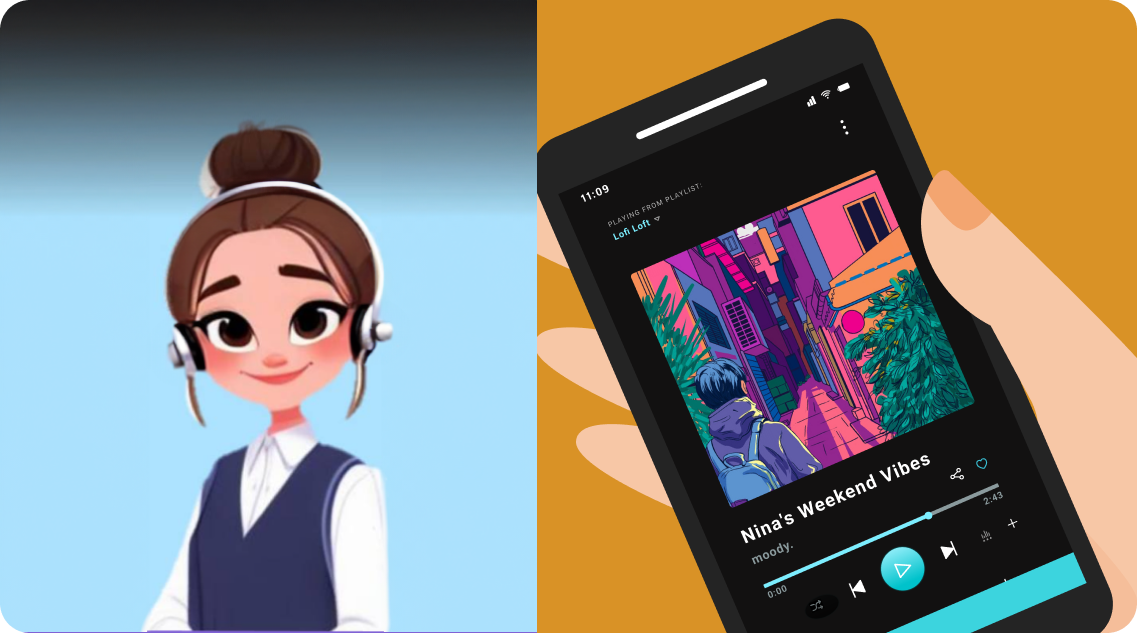
3. Product Loyalty
Identifying segments based on brand or product loyalty can help companies craft targeted loyalty programs or incentives. For example, some customers might consistently choose one brand over others, while others may switch. To illustrate, we can think of a skincare brand.
For brand enthusiasts who are incredibly loyal to our brand and who consistently purchase our products, engage with our social media accounts, and actively participate in loyalty programs, we can offer exclusive early access to new product releases, personalized discounts, invitations to special events, or focus groups.
Moreover, we can encourage loyalty for occasional buyers who purchase from our brand occasionally but not exclusively. To do so, offering targeted promotions, personalized product recommendations based on purchase history, or inviting them to participate in surveys to understand their preferences better might help us tailor marketing campaigns accordingly.
For trial users who have tried a few products from our brand but haven’t fully committed, we need to try to find ways to convert them into loyal customers. For example, we can provide sample-sized products with purchases to highlight our other products, offer trial kits for new customers, and send personalized follow-up emails with tips about skincare routines or suggestions.
On the other hand, we need to maintain loyalty for discount lovers, who may be loyal to our brand when it is time for a sale event and promotions. To do so, we can create a loyalty program with increasing benefits based on purchase frequency, offer exclusive discounts, and highlight the loyalty program’s value beyond discounts.
Lastly, for inactive loyalists who were once loyal to our brand but have become less engaged over time, we must find a way to re-ignite their loyalty. To do this, we can send personalized re-engagement emails, offer exclusive comeback promotions, and provide sneak peeks of upcoming products to recover the interest.
By understanding and catering to these segments based on their level of product loyalty, the skincare brand can develop targeted strategies to strengthen customer relationships, increase customer retention, and foster a sense of brand loyalty among its diverse customer base.
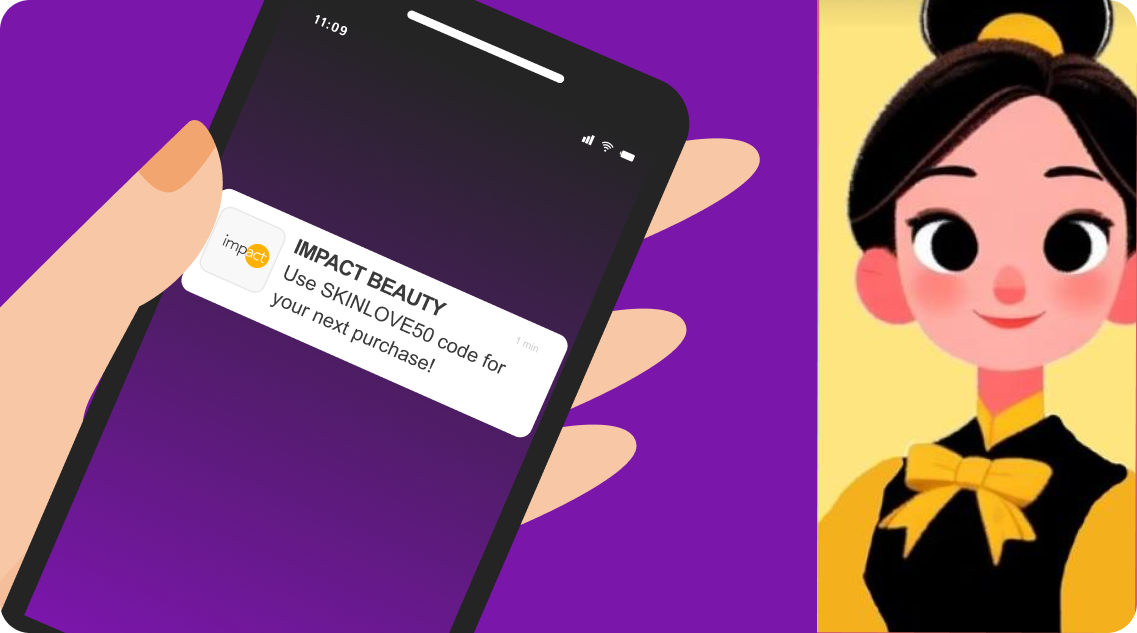
4. Response to The Marketing Channel
Segmenting based on how customers respond to a marketing channel helps companies optimize their marketing channels for better reach and effectiveness. For example, think about a tech company that sells tech products and gadgets.
For social media lovers who are highly active on social media platforms and engage with our brand through likes, shares, and comments on posts, we can focus on visually appealing content, social media contests, and influencer marketing to create buzz around new product launches.
Furthermore, for email enthusiasts who prefer communication through email, open newsletters, click on product announcements and participate in exclusive email promotions, we can send personalized product recommendations, discounts, and early access to limited-edition products.
For in-store shoppers who prefer traditional in-store experiences, we can enhance their experience by organizing hands-on product demos, offering exclusive in-store promotions and events, and creating a seamless transition between online and in-store shopping with QR codes for more information.
Moreover, for tech geeks and online readers who stay informed through tech blogs and review sites, we can collaborate with tech influencers for reviews, provide detailed product specifications on our website, and share positive reviews and testimonials occasionally.
By understanding and catering to these segments based on their preferred marketing channels, the tech gadget brand can optimize its marketing strategies, ensuring that messages reach the right audience through the most effective channels for each segment.
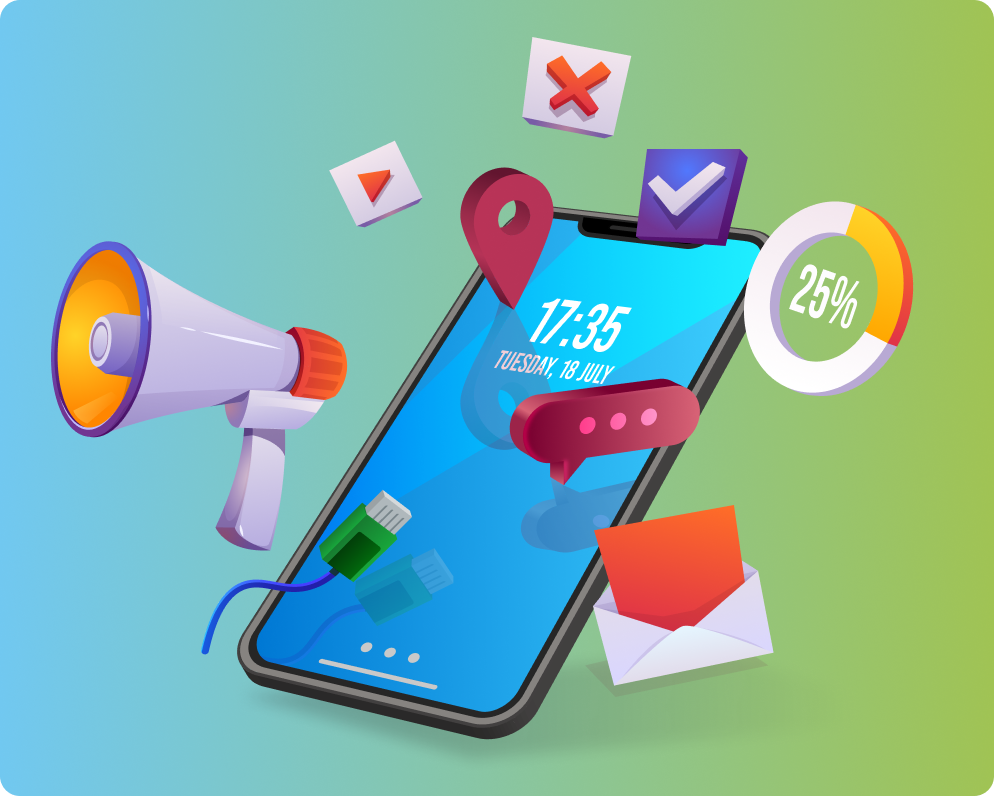
5. Online Behavior
Analyzing how users behave online may help marketers tailor the online experience and marketing strategies to each segment’s preferences. Analyzing users according to their online behaviors could include segments such as frequent website visitors, mobile app users, or customers who engage with the brand through social media. To illustrate, let’s think about a travel booking platform.
For website visitors who regularly visit our website, we can enhance their experience by offering personalized homepage recommendations, quick-access buttons to their most-searched destinations, and upselling with our other brand collaborations, such as car rentals or flight recommendations.
On the other hand, for mobile app users who prefer using the mobile app, we can optimize the app experience by sending push notifications for personalized travel deals and integrating user-friendly features like one-click bookings or early access to flash sales.
Moreover, for social media engagers who actively engage with our platforms on social media, we can run social media contests, share user-generated travel stories, provide exclusive promo codes, and create a sense of community to encourage users to share their travel experiences.
For cart abandoners who frequently add trips to their cart but don’t complete the booking, we can implement targeted email campaigns with personalized offers, reminder notifications, and incentives such as loyalty points for completing the booking to reduce cart abandonment rates.
Lastly, for review watchers, who often rely on online reviews before making travel decisions, we can showcase user testimonials, encourage customers to leave reviews, and offer discounts for users who share their travel experiences on the platform.
By understanding and catering to these segments based on their online behavior, the travel booking platform can optimize its online interface, marketing strategies, and engagement tactics to provide a more personalized and satisfying experience for its diverse user base.
6. Abandonment Behavior
By understanding the behavior of users who abandon a shopping cart or exit a website without making a purchase, businesses can identify reasons for abandonment and implement strategies to reduce cart abandonment rates, such as targeted follow-up emails or special offers. For example, let’s think about an e-commerce fashion brand.
For frequent cart abandoners, who often add items to their shopping cart but leave without completing the purchase, we can implement an automated email campaign strategy targeting this segment. We can lower abandonment rates by featuring personalized product recommendations, limited-time offers, or reminders to complete their purchases.
Secondly, for browsers who browse products without adding them to the cart, we can personalize homepage recommendations and give exclusive sneak peeks or early access to upcoming collections. We can also provide incentives like free shipping to encourage them to purchase.
Moreover, for code chasers who frequently abandon their carts to search for coupon codes, we can implement a pop-up or exit-intent offer with a dynamic coupon code to incentivize immediate purchases. This strategy could reduce the likelihood of users leaving to find discounted products elsewhere.
For concerned shoppers who abandon their carts due to uncertainty about size or fit, we can provide detailed size guides and send targeted notifications with customer reviews emphasizing the fit and sizing of products.
Lastly, for shipping cost haters who abandon carts because of high shipping costs, we can provide free shipping promotions, threshold-based discounts, or limited-time offers to reduce or eliminate shipping charges. These strategies can encourage customers to complete their purchases.
By understanding and addressing these abandonment behaviors, the e-commerce fashion brand can tailor its strategies to re-engage users, reduce cart abandonment rates, and create a more seamless and satisfying shopping experience.

Conclusion
Recognizing and adapting to your audience’s behavioral patterns is the key to effective marketing. By delving into these patterns, marketers can tailor their messages to resonate with specific audiences, ultimately steering their campaigns toward success.
So, as you embark on your marketing journey, remember: it’s not just about what you offer but how well you understand the unique behaviors that shape your audience. Cheers to decoding the secrets of consumer behavior and elevating your marketing strategy!
